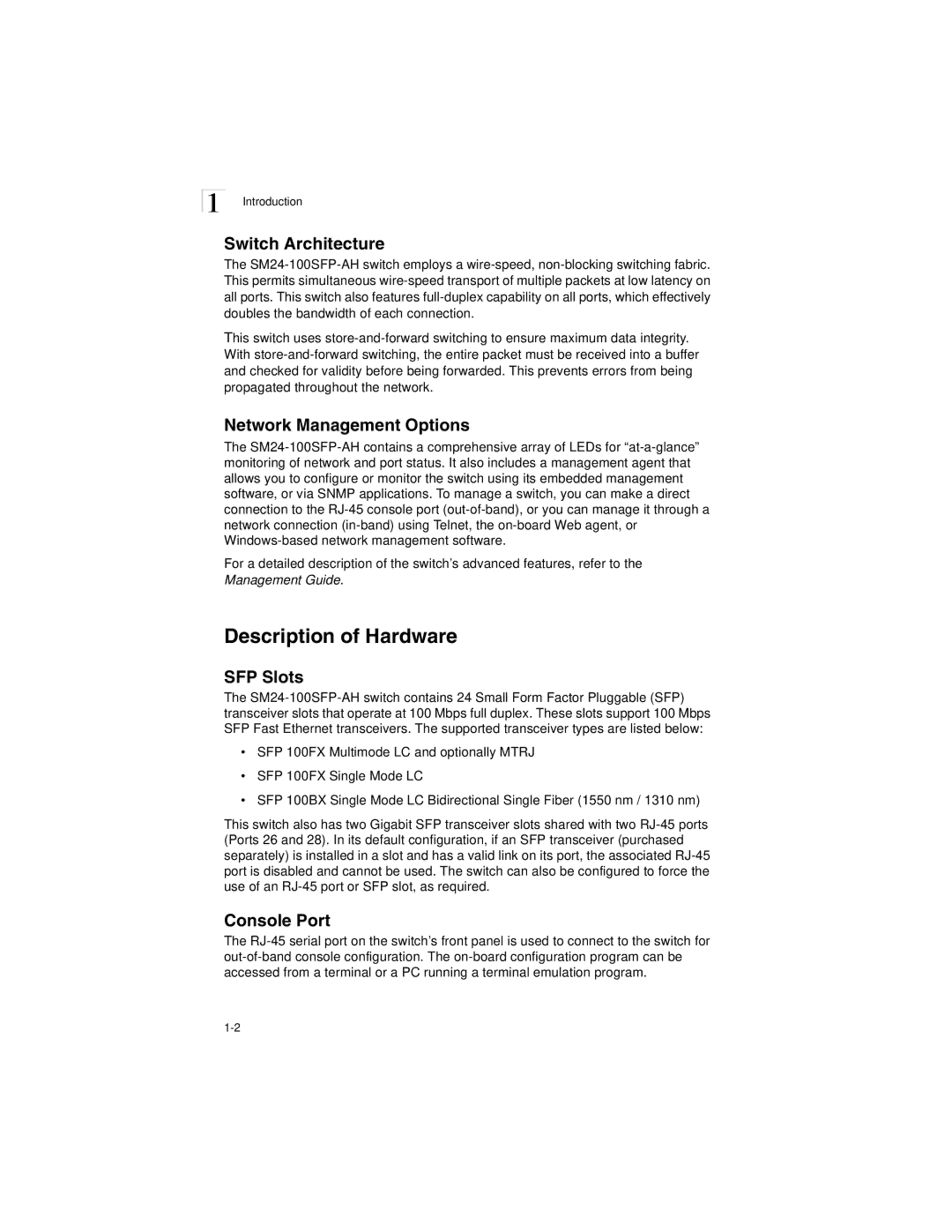1 Introduction
Switch Architecture
The SM24-100SFP-AH switch employs a wire-speed, non-blocking switching fabric. This permits simultaneous wire-speed transport of multiple packets at low latency on all ports. This switch also features full-duplex capability on all ports, which effectively doubles the bandwidth of each connection.
This switch uses store-and-forward switching to ensure maximum data integrity. With store-and-forward switching, the entire packet must be received into a buffer and checked for validity before being forwarded. This prevents errors from being propagated throughout the network.
Network Management Options
The SM24-100SFP-AH contains a comprehensive array of LEDs for “at-a-glance” monitoring of network and port status. It also includes a management agent that allows you to configure or monitor the switch using its embedded management software, or via SNMP applications. To manage a switch, you can make a direct connection to the RJ-45 console port (out-of-band), or you can manage it through a network connection (in-band) using Telnet, the on-board Web agent, or Windows-based network management software.
For a detailed description of the switch’s advanced features, refer to the Management Guide.
Description of Hardware
SFP Slots
The SM24-100SFP-AH switch contains 24 Small Form Factor Pluggable (SFP) transceiver slots that operate at 100 Mbps full duplex. These slots support 100 Mbps SFP Fast Ethernet transceivers. The supported transceiver types are listed below:
•SFP 100FX Multimode LC and optionally MTRJ
•SFP 100FX Single Mode LC
•SFP 100BX Single Mode LC Bidirectional Single Fiber (1550 nm / 1310 nm)
This switch also has two Gigabit SFP transceiver slots shared with two RJ-45 ports (Ports 26 and 28). In its default configuration, if an SFP transceiver (purchased separately) is installed in a slot and has a valid link on its port, the associated RJ-45 port is disabled and cannot be used. The switch can also be configured to force the use of an RJ-45 port or SFP slot, as required.
Console Port
The RJ-45 serial port on the switch’s front panel is used to connect to the switch for out-of-band console configuration. The on-board configuration program can be accessed from a terminal or a PC running a terminal emulation program.
